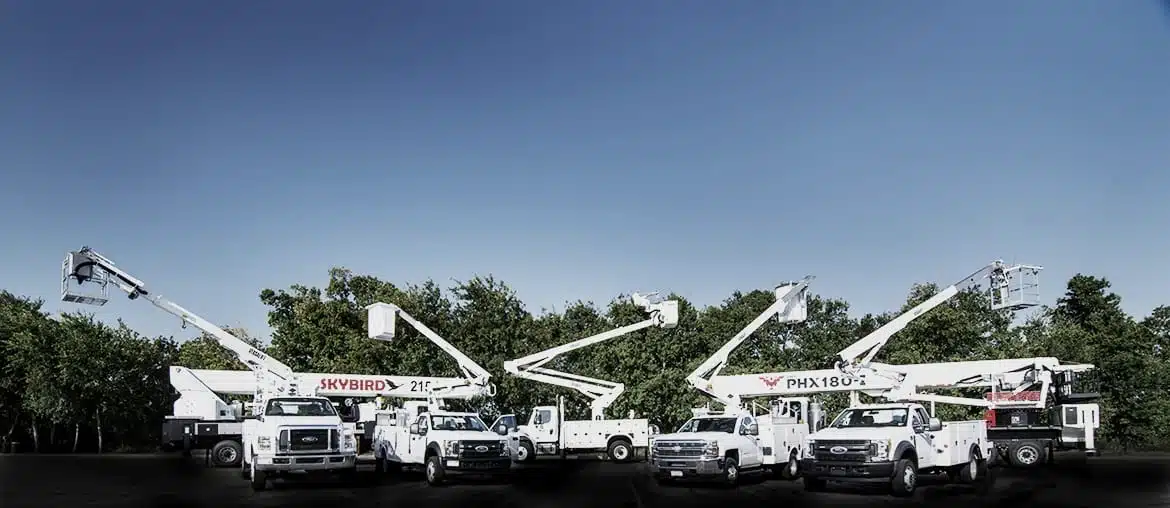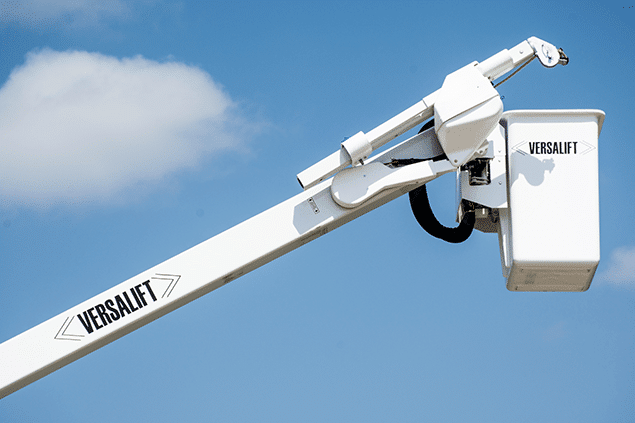When it comes to heavy-duty working at heights, choosing between a bucket truck and a crane can make all the difference in efficiency, safety, and cost. While they may seem similar to the untrained eye, these machines serve very different purposes and are designed for specific tasks. But how do you decide which is right for your project? In this post, we’ll explore the key differences between bucket trucks and cranes to help you make the best choice for your next job.
Understanding the Basics: What are Bucket Trucks and Cranes?
Bucket trucks, also known as a boom or cherry pickers, are vehicles equipped with an hydraulic, extendable boom and a bucket at the end where a worker can stand. The primary function of a bucket truck is to transport personnel to elevated work areas where ladders or scaffolding may not be practical or safe.
They are commonly used for tasks such as:
- tree trimming and forestry
- electrical line maintenance
- sign and light installation
- building maintenance
The maneuverability and ease of use of bucket trucks make them ideal for jobs that require frequent repositioning at different heights. Therefore, bucket trucks are commonly used by utility companies, maintenance crews, and tree care professionals. Read more about bucket trucks for sale with specialized industry setups and our different types of bucket trucks here.
Cranes, on the other hand, are powerful machines designed for lifting and moving heavy loads. They come in various types, including mobile cranes, tower cranes, and truck-mounted cranes. Cranes are typically used in construction, shipping, and heavy industry to lift materials to great heights or move them horizontally over long distances.
Comparing Features: Key Differences Between Bucket Trucks and Cranes
One of the primary differences between bucket trucks and cranes is their intended purpose. Bucket trucks are designed for tasks that involve personnel working at height, while cranes are used for lifting heavy loads. This fundamental distinction influences their design, capabilities, and the type of work they are suited for.
Bucket trucks generally have a higher level of mobility and can easily navigate urban environments, making them versatile for a wide range of tasks. Cranes, however, offer superior lifting capacity and reach, which is essential for construction and industrial applications. Additionally, cranes often require more setup time and space compared to bucket trucks.

Safety Considerations: Ensuring a Safe Working Environment
Safety is paramount when working with either bucket trucks or cranes. Bucket trucks typically have safety features such as harness points and guardrails to protect workers. Operators must be trained to use the equipment properly and follow safety protocols, especially when working near power lines or in high-traffic areas.
Cranes pose different safety challenges due to their size and the weight of the loads they lift. Rigging must be done correctly to prevent accidents, and operators must be skilled in crane operation and aware of their surroundings. Regular maintenance and inspections are crucial to ensure the equipment is in good working condition to prevent mechanical failures.
High Reach: Versalift Elevator Bucket Trucks
Elevator bucket trucks are classified as high-reach equipment, offering a range of working heights and horizontal reaches depending on the model. For added versatility, some models in our elevator bucket truck line come with optional material handling capabilities. Specifically, certain VST and VO models are equipped with heavy-duty winches and jibs, designed to accommodate a wide array of material handling requirements.
At Versalift, we have spent decades perfecting our VO and VST Elevator Bucket Trucks. Every bucket truck we produce is crafted with precision, ensuring the highest standards of safety, quality, and reliability, no matter the size or configuration. Versalift elevator bucket trucks are custom-built to meet your specific needs, whether you’re purchasing a single vehicle for a small business or upgrading a fleet of 1,000 trucks. Each truck is tailored to suit your requirements.

Our commitment goes beyond just delivering a product – we aim to provide an exceptional buying experience, on-time delivery, and top-tier support and maintenance. With the wide range of customizations and options available, you can be confident that your Versalift Elevator Bucket Truck will be the perfect tool to get the job done efficiently and effectively.
Cost Analysis: Evaluating the Financial Aspects
The cost of using bucket trucks versus cranes can vary significantly depending on the project. Bucket trucks are generally more cost-effective for tasks that require frequent repositioning and lighter loads. Their lower operational costs and versatility make them a popular choice for utility companies and maintenance work.
Cranes, while more expensive to operate and maintain, are indispensable for projects that require heavy lifting. The cost of a crane is often justified by the efficiency and capabilities it brings to large-scale construction and industrial projects. When evaluating cost, it’s important to consider not just the rental or purchase price, but also the operational and labor costs associated with each type of equipment.
Making the Right Choice: Factors to Consider for Your Specific Needs
When choosing between a bucket truck and a crane, consider the specific requirements of your project. If the task involves lifting personnel to various heights for maintenance or installation work, a bucket truck is likely the better choice. Its mobility and ease of use can save time and reduce costs.
For projects that involve lifting heavy materials or working at extreme heights, a crane is the more appropriate tool. Assess the load capacity, reach, and setup space required for the job. Additionally, consider the availability of trained operators and the safety protocols needed to ensure a safe working environment. By carefully evaluating these factors, you can select the right equipment to maximize efficiency and safety for your project. Learn more about choosing the right bucket truck for your business here.
Reach out to us, if you want to learn more about our bucket trucks.
